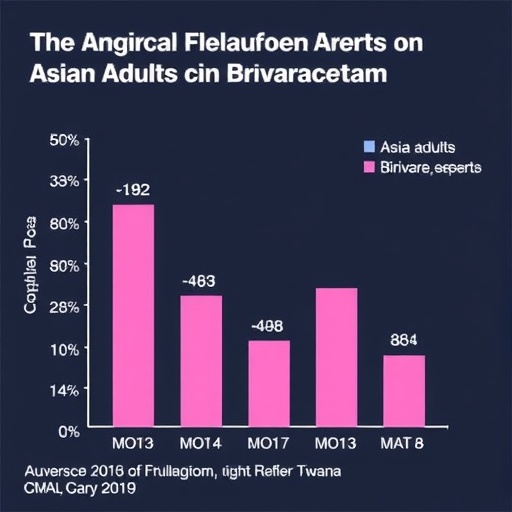
Credit: MD Anderson Cancer Center
A national retrospective study led by researchers at The University of Texas MD Anderson Cancer Center found no association between intensity of post-treatment surveillance and detection of recurrence or overall survival (OS) in patients with stage I, II or III colorectal cancer (CRC). Published in the Journal of the American Medical Association, the study is the largest of surveillance intensity in CRC ever conducted.
"These findings differ from historical data and argue to reconsider current guideline recommendations, in the U.S." said George J. Chang, M.D., professor of Surgical Oncology and of Health Services Research.
According to the American Cancer Society, CRC is the second leading cause of cancer death in the U.S. and is expected to affect approximately 140,000 people in 2018. National and international consensus guidelines for post-treatment surveillance for recurrence vary considerably in frequency and reliance on groups of tests. Although many still recommend frequent testing, adherence to these guidelines is inconsistent, resulting in both over- and under-testing in clinical practice, explained Chang.
"There is limited evidence to inform the current guidelines for follow-up testing after curative treatment of colon and rectal cancer and this has resulted in large variations in surveillance guidelines," said Chang, the study's corresponding author. "We sought to improve our understanding of the optimal approach to follow-up testing including how often that testing should be done."
For the retrospective cohort study, Chang and colleagues analyzed data from 8,529 randomly selected adult patients. Data from the National Cancer Database linked with medical record data from a Commission on Cancer Special Study were evaluated to determine if there was an association between surveillance intensity and the detection of recurrence or OS within a large U.S. population outside a clinical trial. Patients were diagnosed with stage I (25.0 percent), stage II (35.2 percent) and stage III (39.8 percent) CRC and treated with surgery in 2006 or 2007, with follow-up through 2014.
Surveillance intensity was defined by the frequency of imaging scans (PET, CT, MRI) and blood tests for the carcinoembryonic antigen (CEA) biomarker during the first three years of surveillance. Patients treated at high-intensity facilities experienced an average of 2.9 imaging scans and 4.3 CEA tests, while patients at low-intensity facilities underwent an average of 1.6 imaging scans and 1.6 CEA tests. The frequency of testing also varied by stage of disease.
There were no significant differences in median time to detection of recurrence between patients receiving high- or low-intensity imaging or CEA tests. For those receiving high-intensity imaging, the median time was 15.1 months, compared to 16 months in the low-intensity group. Similarly, the median time was 15.9 in the high-intensity CEA testing group and 15.3 months for those in the low-intensity group.
Overall, rates of recurrence during a five-year period did not significantly differ based on intensity of surveillance imaging or CEA testing.
Furthermore, OS rates did not vary significantly based on imaging or CEA surveillance intensity; both groups saw a 73.7 percent five-year OS rate, and seven-year OS rates were 65.6 percent and 65.5 percent in the high- and low-intensity groups, respectively.
These findings differ from previous studies that associate intensive surveillance with earlier recurrence detection and improved overall – though not cancer-specific – survival. However, two randomized trials conducted in recent years failed to demonstrate improved survival and, subsequently, called these traditional assumptions into question, thereby leaving current guidelines unable to recommend an optimal strategy, he explained. Chang also points out that this study is unique in that it is data from real-world practice, not from the highly controlled setting of randomized trials and anticipates that these new findings will be consistent with forthcoming new randomized studies.
"As we learn more about the biology and heterogeneity of colorectal cancer, the answer is not always another test," Chang said. "In addition to added costs, unnecessary testing in cancer patients can lead to treatment toxicity, increased patient anxiety and the potential for false positives, which can lead to patient harm. The data argue that in many cases, a less-intensive surveillance may be a better approach for patients."
Chang stressed that the study team is not advocating for no surveillance, but rather a more tailored approach. In fact, his study is part of a more comprehensive project looking at optimizing follow-up, taking into account a patient's personal preferences, values, and needs.
Chang notes that the research is not without limitations, including: it is a retrospective study and the decision for high- or low-intensity testing was not randomized; data were collected for up to 10 patients for each facility regardless of volume; the cohort was assembled from 2006-2007 and there may have been some changes in contemporary practice; the completeness of data collection could not be independently verified; and the empiric definition of high-intensity surveillance in this study may be less intensive than is practiced in some centers. However, the observed surveillance testing in this study is reflective of real-world practice, and thus provides relevant data for comparison.
###
Chang reports serving as a consultant for Johnson & Johnson. The research was supported by grants from: the Patient-Centered Outcomes Research Institute (PCORI) Award; the National Cancer Institute, U10CA180821; MD Anderson Cancer Center Support Grant; and the Alliance for Clinical Trials in Oncology.
In addition to Chang, other MD Anderson authors include: Rebecca Snyder, M.D., Chung-Yuan Hu, Ph.D., Amanda Cuddy, Y. Nancy You, M.D., all of Surgical Oncology. Additional authors include: Amanda B. Francescatti, American College of Surgeons Cancer Programs; Jessica R. Schumacher, Ph.D., Caprice C. Greenberg, M.D., Daniel McKellar, M.D. and David P. Winchester, M.D., all of University of Wisconsin School of Medicine and Public Health; Katherine Van Loon, M.D., and Alan Venook, M.D., University of California, San Francisco; Benjamin D. Kozower, M.D., Washington University, St Louis; Deborah Schrag, M.D., Dana Farber Cancer Institute.
Media Contact
Laura Sussman
[email protected]
713-745-2457
@mdandersonnews
http://www.mdanderson.org





